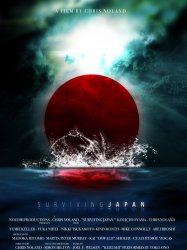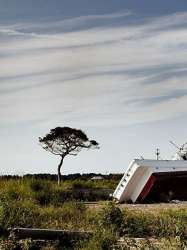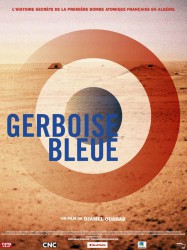White Horse est un film américain de genre Documentaire
White Horse (2008)

Si vous aimez ce film, faites-le savoir !
- Infos
- Casting
- Infos techniques
- Photos
- Vidéos
- Passages TV
- Citations
- Personnages
- Musique
- Récompenses
Durée 18minutes
OrigineEtats-Unis
Genres Documentaire
Themes L'environnement, Documentaire sur l'environnement, Documentaire historique, Documentaire sur le nucléaire, Documentaire sur les technologies, Film catastrophe
Note69%










White Horse is a short documentary by filmmakers Maryann DeLeo and Christophe Bisson that features a man (Maxym Surkov) returning to his Ukraine home for the first time in twenty years. Evacuated from the city of Pripyat, Ukraine in 1986 due to the Chernobyl disaster, he has not returned since then. DeLeo is the same filmmaker of the 2004 Academy Award-winning short film Chernobyl Heart.
Synopsis
The beginning of the film starts with DeLeo, Bisson and Surkov driving through Kiev. This is introduced as the beginning of their journey to Pripyat, near the ground zero of Chernobyl. Once they reach the outpost outside the exclusion zone, we see that the area surrounding Pripyat is very deserted and dark. Once in the city, we see Surkov's old home, which he explains has been robbed of almost all its belongings due to looters. Yet there are still some mementos in the old apartment, including the wallpaper he and his mother put up, the training bars his father bought for him, an old rubber ball he claims was his favorite and a white horse poster plastered on the wall of his old bedroom. The pain he feels is evident. When he sees an old calendar on a door, he rips a large portion off, claiming "the year ended on April 26th". Outside the door of the apartment, he remarks how he wishes he could stay forever. He throws his old ball through the door and walks out of the apartment complex. The film ends with Surkov snapping some twigs in an old courtyard and then an image of the car they traveled in leaving the exclusion zone.Commentaires
Postez un commentaire :
Suggestions de films similaires à White Horse
Il y a 8965 ayant les mêmes genres cinématographiques, 4136 films qui ont les mêmes thèmes (dont 8 films qui ont les mêmes 6 thèmes que White Horse), pour avoir au final 70 suggestions de films similaires.Si vous avez aimé White Horse, vous aimerez sûrement les films similaires suivants :

Le Pic-vert russe (2015)
, 1h20Origine Etats-Unis
Genres Documentaire, Historique
Thèmes L'environnement, Documentaire sur l'environnement, Documentaire historique, Documentaire sur le nucléaire, Documentaire sur les technologies, Film catastrophe
Note66%





Le jeune artiste ukrainien Fedor Alexandrovitch et le réalisateur Chad Gracia enquêtent sur la catastrophe de Tchernobyl : et si ce n'était pas un accident ?

3.11: Surviving Japan (2013)
, 1h30Réalisé par Simon Hilton
Genres Documentaire
Thèmes L'environnement, La mer, Transport, Documentaire sur l'environnement, Documentaire historique, Documentaire sur le nucléaire, Documentaire sur les technologies, Film catastrophe, Catastrophe sismologique
Note81%





The film spans from March 11, 2001 to September 19, 2011, starting with Noland's own experience in the Tōhoku Earthquake and tsunami, Fukushima Daiichi nuclear disaster followed by volunteer activities in Ofunato

My Atomic Aunt (2013)
Genres Documentaire
Thèmes L'environnement, La mer, Transport, Documentaire sur l'environnement, Documentaire historique, Documentaire sur le nucléaire, Documentaire sur les technologies, Film catastrophe, Catastrophe sismologique
Note67%





Surviving the Tsunami brings together social, environmental, and personal perspectives of the national catastrophe of the Fukushima nuclear meltdown. In the documentary, Kyoko Miyake travels back to her hometown in Namie, Fukushima, to revisit her old life and assess the trauma still lingering from the disaster. She revisits Namie, her mother's hometown and meets the people who depended on the success of the nuclear plant for their livelihood. The film also follows Bunsei Watanabe and Kyoko Miyake's Aunt Kuniko, two people who hope for the rejuvenation of Namie, despite the disaster that has occurred. Despite having lost family, friends, and jobs due to the meltdown and subsequent fear of the contamination zone, these two individuals are determined to rebuild their towns and neighborhoods and bring back the sense of community they once had. The film follows the residents of Namie, with emphasis on the experiences of Aunt Kuniko, as they come to terms with the reality of living in or near the "radiation zone" left in the wake the plant's nuclear meltdown. Surviving the Tsunami offers a different perspective on Japanese culture, national identity, human adaption, and global nuclear energy and proliferation.

Колокол Чернобыля (1987)
Genres Documentaire
Thèmes L'environnement, Documentaire sur l'environnement, Documentaire historique, Documentaire sur le nucléaire, Documentaire sur les technologies, Film catastrophe
Note68%






Чорнобиль.3828 (2011)
, 30minutesOrigine Ukraine
Genres Documentaire, Historique
Thèmes L'environnement, Documentaire sur l'environnement, Documentaire historique, Documentaire sur le nucléaire, Documentaire sur les technologies, Film catastrophe
Note74%





Twenty-five years have passed since Valeriy Starodumov worked as a dosimeter scout in September 1986. Valeriy worked at the epicenter of the explosion, the reactor's operation area, which was the most radioactive part of the site. The protagonist, a direct participant in the operation, went to the roof himself and brought people there after a failed attempt to clear the area with robots. At the government level, it was decided to assign soldiers and cadets of military schools to the task of cleaning the roofs. Unique pictures of the events of 1986 are widely used in the film. "Chernobyl.3828" is dedicated to people who saved the world from the radioactive contamination at the cost of their health and life.

Black Wind, White Land (1993)
, 53minutesGenres Documentaire
Thèmes L'environnement, Documentaire sur l'environnement, Documentaire historique, Documentaire sur le nucléaire, Documentaire sur les technologies, Film catastrophe

Chernobyl Heart (2003)
, 39minutesOrigine Etats-Unis
Genres Documentaire
Thèmes L'environnement, Documentaire sur l'environnement, Documentaire historique, Documentaire sur le nucléaire, Documentaire sur la santé, Documentaire sur les technologies, Film catastrophe
Note77%





La réalisatrice voyage à travers l'Ukraine et la Biélorussie et observe les effets de la catastrophe nucléaire de Tchernobyl. De nombreux enfants souffrent de problèmes cardiaques, ainsi que de sévères problèmes liés aux radiations.

The Unnamed Zone (2006)
, 1h20Réalisé par Carlos Rodríguez
Genres Documentaire
Thèmes L'environnement, Documentaire sur l'environnement, Documentaire historique, Documentaire sur le nucléaire, Documentaire sur les technologies, Film catastrophe
Note63%





The Spanish film crew led by Carlos Rodriguez is following the life stories of three children - Lidia Pidvalna, Anastasia Pavlenko, and Andriy Kovalchuk - whose lives were drastically changed after an explosion at the Chernobyl Nuclear Power Station on April 26, 1986. Through the documentary, the children and their families "living perilously close to the exclusion zone around the destroyed station recount their fears, dreams, fantasies, and hopes for the future." Each child holds a "Chernobyl certificate" which bestows access to government grants and aid and is a gruesome reminder of their existential reality.

Gerboise Bleue (2009)
, 1h30Origine Algerie
Genres Drame, Documentaire
Thèmes L'environnement, Documentaire sur l'environnement, Documentaire sur la guerre, Documentaire historique, Documentaire sur le nucléaire, Documentaire sur les technologies
De 1960 à 1966, au sud de Reggane (Sahara algérien), la France a procédé à quatre essais nucléaires en atmosphère et treize souterrains. Le premier portait le nom de code Gerboise bleue et fut d’une puissance quatre fois supérieure à Hiroshima. Pour la première fois, des survivants français et touaregs témoignent de leurs combats pour la reconnaissance de leurs maladies, et révèlent dans quelles conditions les tirs se sont véritablement déroulés. Tandis que l'armée française continue, près de 50 ans plus tard, à nier sa responsabilité auprès des populations exposées aux radiations.
 , 52minutes
, 52minutesOrigine Allemagne
Genres Documentaire
Thèmes L'environnement, Religion, Documentaire sur l'environnement, Documentaire sur la guerre, Documentaire historique, Documentaire sur le nucléaire, Documentaire sur la religion, Documentaire sur les technologies, Religion juive
Note15%





Israël et le tabou de la bombe est un film documentaire allemand réalisé en 2012. Il raconte l'histoire du programme nucléaire israélien.
 Connexion
Connexion